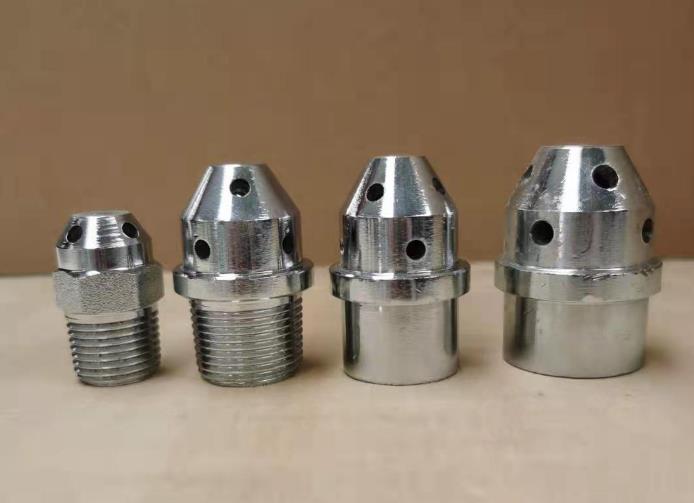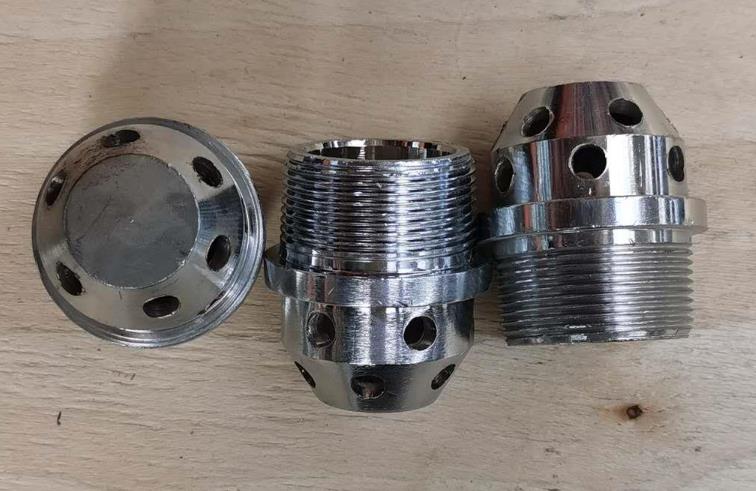
First, overview of gas fire extinguishing system
Before discussing the principle of sprinkler nozzle selection in depth, we first need to understand the basic working principle of the gas fire extinguishing system. Gas extinguishing systems extinguish a fire by releasing a specific type of gas that dilutes the oxygen around the fire to a level below the concentration required for the fire to keep burning. Different types of gas fire extinguishing systems use different fire extinguishing gases, such as halon gas, carbon dioxide, inert gas, etc. The design goal of the system is to quickly and effectively release the appropriate amount of fire extinguishing gas to the fire source area to achieve the purpose of fire extinguishing.
Second, the role of gas fire sprinkler nozzle
sprinkler nozzle is a vital part of the gas fire extinguishing system, which is responsible for directing the fire extinguishing gas to the fire source area. The choice of sprinkler nozzle head will directly affect the performance and efficiency of the system. The following are the main functions of gas fire sprinkler nozzles:

Guide gas: The design of the nozzle should ensure that the extinguishing gas can be quickly and evenly distributed to the fire source area to maximize the efficiency of extinguishing the fire source.
Prevent gas escape: The sprinkler nozzle must be able to prevent the fire extinguishing gas from unnecessarily escaping to the external environment after release, thus ensuring the economy and environmental protection of the system.
High temperature resistance: In the fire source area, the temperature may rise sharply. Therefore, the nozzle must be able to withstand high temperatures, maintain its functionality and ensure stable gas release.
Corrosion resistance: Some fire extinguishing gases are corrosive, which may cause damage to the sprinkler nozzle head. Therefore, the nozzle must be able to withstand the corrosion of specific gases.
Safety: sprinkler nozzle design should follow the relevant safety standards to ensure that no accidents occur during use.
Third, the selection principle of gas fire sprinkler nozzle
1. Determine the applicable fire extinguishing gas

Before selecting the sprinkler nozzle, it is necessary to specify the type of fire extinguishing gas used. Different fire extinguishing gases require different types of sprinkler nozzle heads because each gas has different physical and chemical properties. For example, halon gas systems typically use atomizing nozzles, while carbon dioxide systems use nozzle-type nozzles.
2. Consider the characteristics of the fire source area
Different fire areas may require different types of sprinkler nozzle heads. For example, an enclosed machine room and an open warehouse require different sprinkler nozzle designs because the size, shape and ventilation of the fire source area will be different. For open areas, sprinkler nozzles with larger coverage areas may be required, while for closed areas, more fine control is required, which may require the use of multiple small sprinkler nozzles.
3. Determine the number and layout of sprinkler nozzle heads
According to the size and shape of the fire source area, as well as the design requirements of the gas fire extinguishing system, the number and layout of the sprinkler nozzle need to be determined. This step requires precise calculations to ensure that the extinguishing gas can effectively cover the entire fire source area.
4. Select the appropriate sprinkler nozzle type
Different sprinkler nozzle types are suitable for different application scenarios. Here are some common sprinkler nozzle types:
a. atomizing nozzle: The atomizing nozzle is suitable for the situation that the fire extinguishing gas needs to be evenly distributed to the fire source area. They do this by atomizing the gas into tiny particles.
B. nozzle type nozzle: the nozzle type nozzle is typically used for co2 system, through high-speed jet will lead to the gas fire area, to curb the spread of flames.
c. Foam nozzles: Foam nozzles are commonly used in liquid fuel fires. They extinguish the source of the fire by releasing a foam mixture.
d. Nozzle type shock wave nozzles: These nozzles are designed for high-risk sites, such as oil refineries. They can produce a powerful shock wave when released, extinguishing the source of the fire.
5. Comply with relevant standards and regulations
sprinkler nozzle selection must comply with international and regional standards and regulations to ensure system safety and compliance. These standards typically specify the design, performance, and installation requirements of sprinkler nozzle heads.
6. Consider maintenance requirements
sprinkler nozzle heads need regular maintenance and inspection to ensure that they are working properly. Therefore, when choosing the nozzle, it is necessary to consider the difficulty of maintenance and the frequency of maintenance required.
7. Consider cost and economics
The choice of sprinkler nozzle heads is not only affected by performance and safety, but also by cost. The price of different types of sprinkler nozzle heads and products from different manufacturers can vary greatly. Therefore, when choosing a sprinkler nozzle, it is necessary to weigh the relationship between performance and cost.
8. Consider system integration
The choice of sprinkler nozzle heads must be combined with the design and integration considerations of the entire gas fire extinguishing system. This includes coordination with control systems, gas storage and release equipment to ensure systems can work together in the event of a fire.
Four, the selection of common gas fire sprinkler nozzle examples
Here are some examples of common gas fire suppression systems and corresponding sprinkler nozzle choices:
Carbon dioxide systems: Carbon dioxide systems are commonly used in electronic equipment rooms, computer rooms, and similar enclosed Spaces. For this application, nozzle-type nozzles are a common choice because they are able to quickly release carbon dioxide into the fire source area and effectively extinguish the fire source.
Halon gas systems: Halon gas systems are commonly used in museums, archives, and other applications that require clean gas. Atomizing nozzles are a common choice because they are able to evenly distribute halon gas to the fire source area without causing damage to artifacts and documents.
Foam systems: Foam systems are commonly used in places such as fuel storage tanks and chemical plants. The foam nozzle releases the foam mixture to form a restraining layer on the fire source. These showerheads need to be specially designed to ensure that foam can effectively form and cover the fire source.
Nozzle type shock wave nozzle: This type of nozzle is commonly used in high-risk sites such as oil refineries and chemical plants. They can produce a strong shock wave to extinguish the source of the fire. The selection of this type of sprinkler nozzle requires careful consideration of the characteristics of the fire source and system design requirements.
The performance and efficiency of a gas fire extinguishing system largely depend on the choice of sprinkler nozzle. Choosing the right sprinkler nozzle is a critical step in protecting life and property. When selecting sprinkler nozzle heads, factors such as gas type, fire source area characteristics, quantity and layout, maintenance requirements, cost and system integration need to be considered. In addition, it is also very important to follow the relevant standards and regulations to ensure the security and compliance of the system. With careful selection and design, gas fire suppression systems can be most effective in the event of a fire, reducing losses and hazards.


